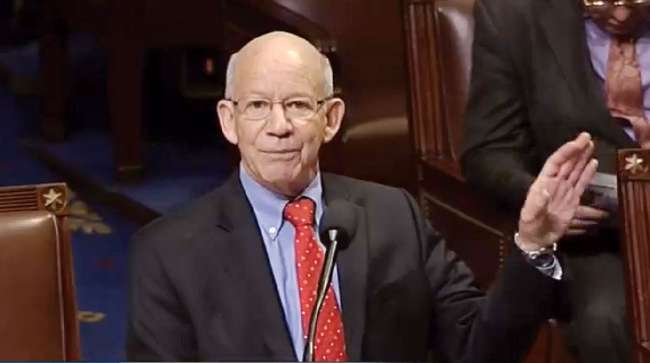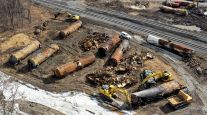Senior Reporter
US House Passes FEMA Recovery Bills

[Stay on top of transportation news: Get TTNews in your inbox.]
Legislation designed to facilitate recovery efforts for communities and commercial corridors hard-hit by severe-weather events recently advanced in the U.S. House of Representatives.
On April 5, the chamber easily passed the Resilient Assistance for Mitigation for Environmentally Resilient Infrastructure and Construction by Americans (AMERICA) Act. The legislation, designed to enhance mitigation and resilience provisions during post-natural disaster recovery efforts, has gained bipartisan backing.
“Communities around the country are being hit harder than ever before by natural disasters and extreme weather events due to the ongoing climate catastrophe. In addition to taking rapid action to decarbonize, we must also prepare our neighborhoods and infrastructure for these increasingly violent events,” Transportation and Infrastructure Committee Chairman Peter DeFazio (D-Ore.) said. “The Resilient AMERICA Act was designed to do just that by putting mitigation and loss prevention at the forefront of our emergency management strategy, and I look forward to seeing it signed into law.”
The bipartisan #ResilientAMERICA Act invests in our communities. Pre-disaster mitigation and resilience are critical in reducing damage caused by severe climate events. We applaud the House for passing this bill and thank @RepPeterDeFazio & @RepSamGraves for their leadership. — National League of Cities (@leagueofcities) April 6, 2022
“The Resilient AMERICA Act will reduce disaster damages and hardships by placing a higher priority on disaster mitigation,” committee ranking member Rep. Sam Graves (R-Mo.) added. “In my district, many people have suffered losses to their homes and business because of flooding, and this bill makes common-sense reforms to ensure that we invest more [Federal Emergency Management Agency] resources on the front end to reduce and prevent the impacts of floods and other disasters before they can strike.”
The chamber also sent to the U.S. Senate the Small Project Efficient and Effective Disaster (SPEED) Recovery Act. The measure, backed by the committee’s leadership, aims to expedite disaster recovery efforts, primarily for rural communities. It is designed to streamline the recovery process as well as minimize administrative procedures.
My bill, the SPEED Recovery Act, is going to help many small towns cut through the mess of red tape over at FEMA.
It’s going to get communities the help they need faster with fewer headaches.
It passed the House today by a vote of 414-11. pic.twitter.com/BocQ7iQmx1 — Rep. Sam Graves (@RepSamGraves) April 5, 2022
“In this era of climate crisis, no communities are safe from the potentially devastating impact of disasters,” DeFazio noted. “The SPEED Recovery Act will cut red tape and reduce the time it takes communities to receive critical assistance for small disaster recovery projects from FEMA. By updating the threshold for what qualifies as a small project, barriers to relief and recovery will be alleviated and so will the time it takes communities to get back on their feet post-disaster.”

Host Michael Freeze discusses the future of tire maintenance with Yokohama's Tom Clauer and Goodyear's Austin Crayne and Jessica Julian. Hear a snippet above, and get the full program by going to RoadSigns.TTNews.com.
Graves added, “The SPEED Recovery Act is going to dramatically reduce the number of hoops communities have to jump through with FEMA to get much-needed help.
“Congress created an expedited process for small disaster-recovery projects to get approved through FEMA, but the threshold for what qualifies as a ‘small project’ has fallen out of touch with reality.
“Updating this threshold is going to reduce the burden of red tape on small communities and allow them to recover from disasters faster. This is a big win for rural America.”
A vote on the two bills in the U.S. Senate has yet to be scheduled.
FEMA Criswell 2022 Priorities Statement by Transport Topics on Scribd
At a hearing this month, FEMA Administrator Deanne Criswell told the panel severe-weather preparedness remains a priority for the Biden administration’s infrastructure agenda.
“We must recognize we are facing a climate crisis,” she said. “FEMA can educate not only our own staff, but also the nation about the impacts our changing climate poses, and how this will influence the work we do as emergency managers.”
She added: “We must integrate future conditions into our planning efforts. We must think bigger about how we approach mitigation and shift our projects to those with communitywide impact, and, as with disaster relief, we must eliminate barriers underserved communities face to receive mitigation assistance.”
Want more news? Listen to today's daily briefing below or go here for more info:


